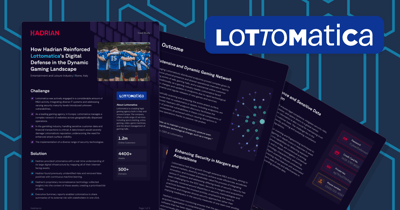Research | 3 mins
Recognizing the Value of Ongoing Cyber Risk Surveillance

There is constant evolution in cyber threats, posing persistent risks to organizations. Our latest research in the 2024 Report: Mapping Cyber Risks From Outside reveals a concerning pattern: vulnerabilities aren’t just varied—they’re also emerging daily. This ongoing cycle highlights the critical need for continuous and thorough monitoring to stay ahead of potential attackers.
Diverse Risks Demand a Broad Security Scope
From our research, we see a wide array of risks that organizations face. The data shows that threats span across multiple categories, including:
-
Domain Name Servers (26.9%): Domain name takeovers and DNS record vulnerabilities are prominent issues, often exploited for use in phishing attacks or spreading malware.
-
Service Exposure (22.1%): Common services like Remote Desktop Protocol (RDP), SSH, and FTP expose networks and provide an entry point for threat actors to attack.
-
Injection Attacks (15.4%): SQL injection, cross-site scripting, and other forms of injection are well-known threats that continue to compromise data and systems.
-
File Directory Exposure (12.2%) and Misconfiguration (9.5%): These structural risks allow attackers to gain insight into system architecture or data access, often due to simple configuration errors.
These categories only scratch the surface. Additional threats, such as Application Exposure (7.9%), Authorization Issues (1.9%), and Cloud & SaaS Misconfigurations (1.2%), reveal the extensive range of vulnerabilities that organizations need to keep track of.
Deep In Sync With The New Evolving Threats Continuously
While the types of cyber risks are diverse, they’re also consistently found in organizations’ attack surfaces. Our research found that new risks are discovered on a daily basis, which makes sense given the ongoing changes that are made to the average business's tech stack.
The chart on monthly risk discovery shows some slight fluctuation but constant emergence of new risks. Point-in-time assessments of the tech environment are not effective anymore because a new vulnerability could be created the next day and not discovered for a year.
Why Point-in-Time Assessments Are Not Good Anymore
Many organizations still rely on periodic assessments or single-point-in-time scans. Unfortunately, the gaps between assessments are opportunities for threat actors and a poor methodology for maintaining a strong security posture. As we’ve seen, risks evolve alongside technological changes within organizations. Each software update, configuration change, or new service added to the network could inadvertently introduce a new vulnerability. Without a consistent, proactive approach to security monitoring, these newly introduced risks might go unnoticed until it's too late.
Our recommendation? Adopt a security strategy that treats monitoring as an ongoing, integral part of risk management. Continuous monitoring allows organizations to address risks in real-time as they appear, instead of leaving them to grow into bigger issues.
The Hacker’s Perspective: Seeing What Attackers See
To truly get ahead of these threats, it’s critical to approach security from the hacker's perspective. Hackers are continually searching for vulnerabilities in organizational networks, scanning the internet in as little as 15 minutes after a new CVE is announced. By adopting a similar mindset and using automated tools designed to replicate hacker tactics, organizations can better predict, detect, and mitigate potential risks before they’re exploited.
Cyber threats are both complex and constantly evolving, and organizations need a proactive, hacker-informed strategy to stay one step ahead.
To learn more about how continuous monitoring can help your organization stay ahead of threats, download the full 2024 Report: Mapping Cyber Risks from the Outside today.






